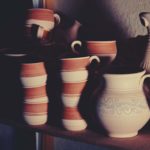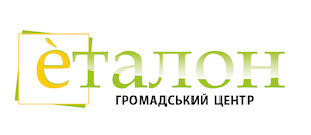Does every marketplace in this part of the world look the same? Yes, to some extent. We will find stalls with household appliances: pots, knives, brushes, cheap clothes that came directly from China. Some tools, wellington boots, jars. Here and there someone sells the staff that he does not need at home. Somewhere next to it, there is a stall with fake perfume, even further on there are stands with sweets, baked products and local cuisine. Somewhere in between there are ladies selling traditional sheep cheese horses straight from the tray with which they squeeze through the crowd.
On the marketplace, the rules are clear – it has to be sold, so sellers call, accost the clients, praise their goods. In addition, we are in rural areas, so the animal market begins behind the official marketplace. You can buy ducks, hens and even a pig there.
In addition, in the city of Kosiv (Ukr. Kosiv, in the Ivano-Frankivsk oblast), the marketplace has a large part intended for souvenirs for tourists and local handicrafts. You can also buy there hand-embroidered shirts with traditional patterns. Casual models and the ones for special occasions. The avenue is still the ladies presenting their lizhnycks – hand-woven, woolen blankets and rugs. Natural wool products not only provide the heat, they also give a number of health benefits. Wool, though rough, stimulates circulation. It helps with rheumatic and traumatic pains and also relieves migraines and headaches, which is why apart from blankets, woolen pillow cases are sold. You can also buy thick, knitted socks just next to the lizhnycks. This is not only a “cool gadget” for cold winter, when the feet stiffen from cold, but also as the saleswoman says: – A good solution for the elderly, with weaker circulation. When a person has not got enough movement and the legs freeze.
We can also notice local wood products. At one stall, the fair is extremely rich. The saleswoman is starting the conversation:- My husband does it all himself, he is an appreciated artist. Will you be visiting us in the afternoon, won’t you?
Indeed, the presented items are beautiful, full of local symbolism, there are different varieties of swastika, other solar symbols, including the pattern under the title of which our expedition takes place – the Carpathian rosette. There are also sacred objects, crosses connected with the symbolism of the sun, exactly the same can be seen in the Museum of Hutsul Region in Kolomyia. I am approaching one seller and ask for a wooden plate with a carved swastika. I am wondering what the seller will tell me about this symbol.
– It is an Old Slavic sign, very old one. It is our local purely-Slavic sign. Ukrainians, Belarusians, Poles, we are all true Slavs, Russians are not. They are not pure Slavs. They were under Mongol rule when we here, in these lands… It means success. Hitler should not take it.
So, by the way, it is already known what one thinks about the Russians here, maybe it is not so strange, considering the “odd” war that is still going on, the destabilisation of the country and the poverty that forces people to go for work, mainly to Poland.
Apart from the incentive to buy souvenirs, I hear all the time: – How are you in Poland? Is there the work, though?
Surprisingly, none of the local artists even thought about selling their handicrafts in Poland or somewhere in Western Europe. These beautiful objects, whose values are aware of their creators, I have the impression are produced largely for the internal market. It is difficult for me to say how many tourists come to buy souvenirs in the summer. However, this shows that handicrafts in the Hutsul region are still a living tradition, which is used by local residents in everyday life. This is not a tradition manufactured and reproduced for tourists, visitors, strangers. It is also not processed so that it “sells better”. These are still goods that, despite of high prices are often bought by local buyers, and then, they are everyday objects, not travel souvenirs. It probably reflects badly on the development of local tourism, but it certainly can delight ethnographers trying to capture and stop at least for a moment what is passing and changing in today’s world.





















